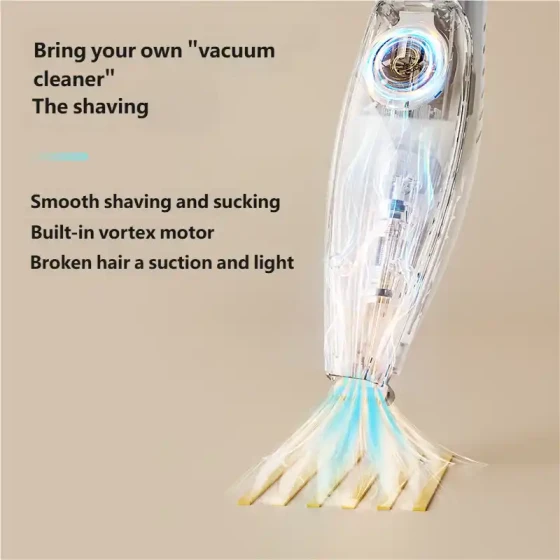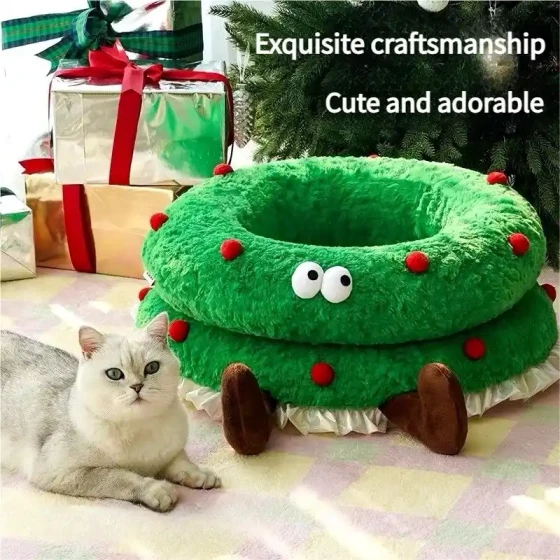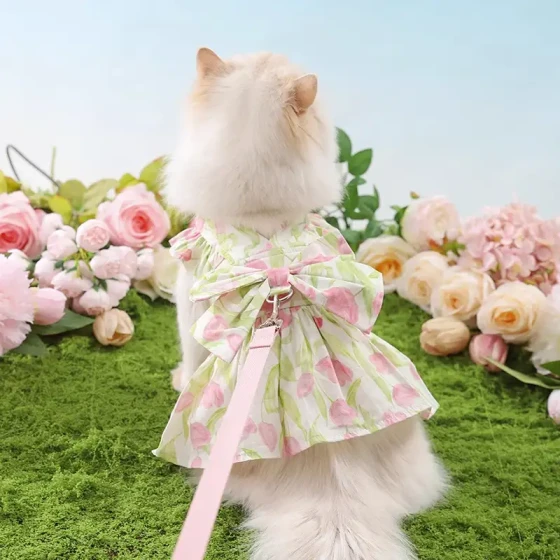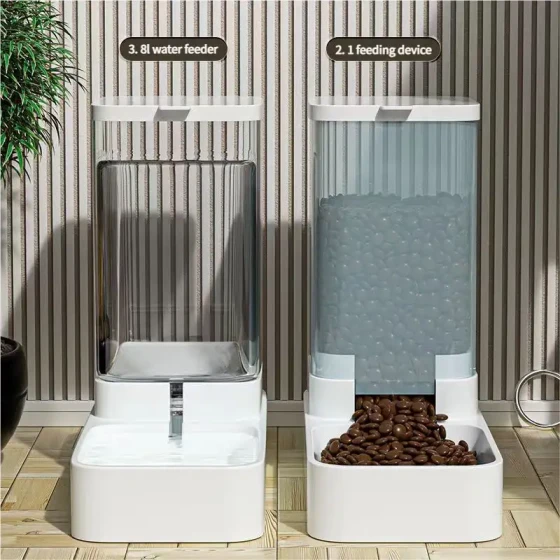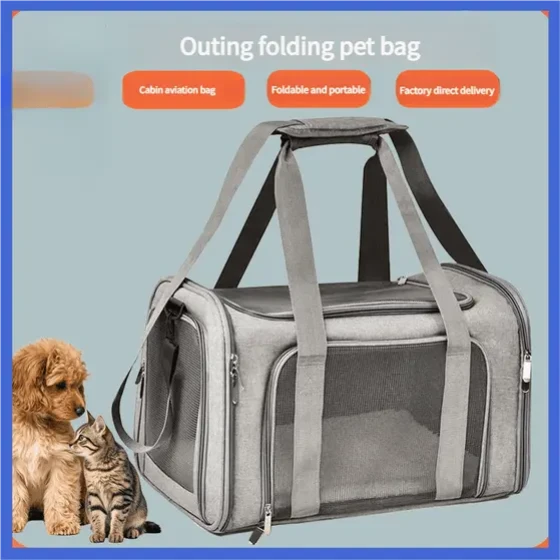How to Feed a 35-Day-Old Kitten_Scientific Feeding Guide and Precautions for Kittens
Taking care of a kitten about 35 days old (approximately 5 weeks old) is like raising a human baby, requiring meticulous care, especially regarding diet. At this stage, kittens are undergoing a critical transition from liquid to solid foods. Mastering scientific feeding methods and precautions is essential to ensure their healthy and happy growth.
How to Feed a 35-Day-Old Kitten: Scientific Feeding Guide and Precautions for Kittens
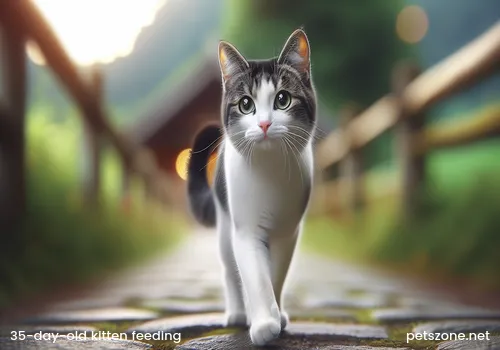
For 35-day-old kittens, they already have some mobility, with eyes fully open, ears perked up, and baby teeth beginning to emerge. They are curious about the world and playful. This period is a key stage for weaning, and their diet needs adjustment as they can no longer rely entirely on milk.
Feeding Principles: Gradual Transition, Small Frequent Meals
The digestive system of a 35-day-old kitten is still relatively weak, and a sudden change of food can cause gastrointestinal discomfort. Therefore, the core of feeding is to gradually introduce solid foods and adhere to the principle of small frequent meals.
1. Food Selection: Start with "Porridge"
- Kitten milk replacer/goat milk powder: If the kitten has been drinking milk powder before, continue to provide it during this transitional stage as one of the main nutritional sources. Make sure to use milk powder specially designed for cats or goat milk powder. Do not feed cow's milk, as most cats are lactose intolerant and may have diarrhea.
- Kitten wet food (pureed texture): Choose wet food specially formulated for kittens, preferably meat puree texture, which is easier for kittens to accept and digest. You can mix wet food with a small amount of warm water or kitten milk powder to create a thin porridge consistency that kittens can lick easily.
- Soaked kitten dry food: After kittens gradually adapt to wet food, you can try introducing kitten dry food. Initially, soak the dry food completely in warm water or kitten milk powder until it becomes like porridge before feeding. As kittens adapt, gradually reduce the moisture until they can eat dry food directly.
2. Feeding Frequency and Quantity: Adjust as Needed, Prefer Less Over More
35-day-old kittens have a fast metabolism and need to eat frequently for energy. It is recommended to feed them 4-6 times a day during this stage.
- Amount per feeding: There is no fixed standard; adjust according to the kitten's weight and actual appetite. Refer to the feeding recommendations on kitten milk powder or cat food packaging, but more importantly, observe the kitten's condition. Feed until the kitten's belly is slightly round and it no longer actively feeds to avoid overfeeding and digestive issues.
- Monitor the kitten's weight: Healthy kittens should steadily gain weight daily. Use a kitchen scale to weigh the kitten daily and keep a record. If the weight does not increase or decreases, it may indicate insufficient food intake or health problems, requiring adjustment of feeding or veterinary consultation.
3. Feeding Method: Patient Guidance, Create a Pleasant Eating Experience
- Use a shallow bowl: Choose a feeding bowl with a shallow bottom and stable base for easy access.
- Guide licking: When first introducing porridge-like food, the kitten may not know how to eat. Use your finger to dip a small amount of food and gently smear it near or inside the kitten's mouth, encouraging them to lick.
- Maintain a quiet and comfortable environment: Provide a calm and distraction-free space during feeding to help kittens relax and eat.
- Provide fresh drinking water: Besides food, always provide clean, fresh drinking water. Use a shallow water bowl or pet water dispenser.
Transitioning from Milk Powder to Solid Food
Transitioning from milk powder to solid food requires time and should not be rushed. Generally, you can start introducing solid foods around 4 weeks of age.
- Step one: Introduce pureed wet food. Mix kitten wet food with warm water or milk powder into a porridge-like consistency, place it on a shallow dish, and encourage the kitten to lick.
- Step two: Gradually increase solid food ratio. As the kitten adapts to the porridge, gradually reduce the water or milk powder content and increase the amount of wet food.
- Step three: Introduce soaked dry food. Once the kitten can eat wet food smoothly, start soaking kitten dry food in warm water or milk powder and mix with wet food for feeding.
- Step four: Gradually reduce moisture. Slowly reduce water content in soaked dry food until the kitten can eat dry kibble directly.
The entire transition may take several days to a week. Each kitten’s acceptance varies, so observe patiently without forcing. If diarrhea or digestive discomfort occurs during transition, revert to the previous diet temporarily and try again once the condition improves.
Tips for Judging Kitten Health
Besides feeding, observing the kitten’s overall condition is an important indicator of health.
- Energy level: Healthy kittens should be lively, curious about their environment, and enjoy playing.
- Appetite: Good appetite and able to eat enough at each feeding.
- Weight gain: Steady daily weight gain.
- Excrement: Stool should be formed with normal color (marble patterns may appear when starting solid food), with no diarrhea or constipation.
- Eyes and nose: Eyes should be bright and clear without discharge; nose moist, clean, and no runny nose.
- Fur condition: Clean and smooth fur with no hair loss or skin issues.
- Anal area: Clean with no fecal residue.
If kittens show signs like poor appetite, lethargy, persistent vomiting, diarrhea, low body temperature, or weight loss, take them to a veterinarian immediately for professional help.
Other Precautions
- Keep warm: Although 35-day-old kittens can regulate their body temperature somewhat, they still need a warm and comfortable resting environment to avoid catching cold.
- Litter training: At this age, kittens have the instinct to use a litter box. Provide a shallow litter box with non-clumping litter (to prevent accidental ingestion) and guide kittens to recognize it. They will quickly learn.
- Socialization: Engage in safe interactive play frequently to promote social development.
- Deworming and vaccination: Follow veterinary guidance to perform timely internal and external deworming and vaccinations to protect kitten health.
Raising a little kitten is both a joyful and challenging experience. With extra patience and care, they will surely grow strong and become your adorable companion.
Frequently Asked Questions
Q1: Can a 35-day-old kitten eat dry cat food completely?
A1: Usually, it is not recommended for 35-day-old kittens to eat dry cat food exclusively. Their teeth and digestive system are not fully developed yet, making chewing and digesting dry food difficult, which may cause gastrointestinal issues. It is better to start with wet food or soaked dry food and transition gradually.
Q2: What should I do if the kitten refuses new food?
A2: Kittens may resist new food. Try mixing the new food with familiar milk powder or warming the new food slightly to enhance its aroma, making it more appealing. You can also try hand-feeding to help them get used to the new food's taste and texture. If the kitten still refuses after multiple attempts, consult a vet to rule out health issues.
Q3: How to tell if a kitten is full?
A3: Observe the kitten’s belly; it will be slightly rounded when full. Also, a full kitten will stop actively feeding, may lick its lips, then go sleep or play. If the kitten continues to look for food or keep meowing after eating, it might not be full, and you can increase feeding slightly.
Q4: What to do if the kitten has diarrhea?
A4: Diarrhea in kittens can have many causes, such as dietary changes, parasites, stress, or illness. For mild diarrhea, revert to the previous diet and observe for two days. If diarrhea is severe, persistent, or accompanied by other symptoms like vomiting or lethargy, promptly take the kitten to the vet.
Q5: Does a 35-day-old kitten need to drink water?
A5: Yes. Although 35-day-old kittens still eat wet food or milk powder, clean drinking water should be provided at all times to maintain hydration.
Q6: What type of cat food should kittens eat?
A6: Choose food specially formulated for kittens, usually labeled "Kitten Food." High-quality kitten food has higher protein, fat, and energy content to meet their rapid growth needs. It's best to select food that meets AAFCO nutritional standards to ensure balanced nutrition.
References:
(Note: The following are text references without links)
- Alley Cat Allies website article "How Old Is That Kitten? Kitten Guide: Five Weeks"
- "New Cat Owner Must-Reads, Seven Common Kitten Diseases" - K Editor, 2021-12-30
- Sina News article "How to Conquer Little Milk Kittens? Honest Kitten Food Recommendations," 2023-08-29
- Humane Society of Charlotte (HSC) website article "Kittens 5 Weeks and Older - Feeding & Care: A Guide"
- National Animal Hospital article "Home with Milk Kittens! Basic Understanding of Newborn Kittens," 2021-02-24
- PetMD website article "Kitten Development: Understanding a Kitten's Major Growth Milestones"
- Quora user post "What are some signs of a healthy kitten?", 2022-07-22
- PetMD website article "Weaning Kittens: When and How To Introduce Solid Food," 2023-11-21
- The Spruce Pets website article "A Complete Kitten Feeding Schedule for Newborns to 8 Weeks," 2024-10-21
- Moreson article "Newbie Battle with Kittens! Kitten Combat Manual, Essential Guide for New Cat Owners!", 2023-09-26
- Whiskas UK website article "How often should I feed my kitten?"
- Bull Pharmaceutical article "Signs to Determine if Your Kitten is Healthy"
- Bull Pharmaceutical article "Beginner's Guide to Identifying Kitten Health"
- Animal Welfare League article "CARING FOR KITTENS UNDER 5 WEEKS"
- PetPetIn article "From Newborn to Adult Cat: Complete Guide to Kitten Feeding - What Should Kittens Eat? Milk, Milk Replacer, or Cat Food?", 2025-01-08
- PetPlay Season article "Kitten Food Switching," 2025-03-03
- Kitten Lady website article "Weaning Kittens"
- Purina US website article "How Much to Feed a Kitten: A Kitten Feeding Chart by Age"
- Douban article "How to Feed a Kitten Around One Month Old? Can They Eat Cat Food Yet?" by ipet, 2023-09-24
- PetPlay Season article "Kitten Food Switching," 2025-03-03
- "How Many Meals Should a Cat Eat a Day? Best Feeding Advice from Kitten to Adult Cat," 2025-01-17
- Koret Shelter Medicine Program article "Caring for Kittens from Birth to Eight Weeks"
- Rover.com article "Kitten Development From 1 to 12 Weeks," 2023-09-23
- Monster Tribe article "How Many Meals Should a Cat Eat a Day? Complete Feeding Guide for a Healthy and Satisfied Kitty!", 2025-03-07
- Royal Canin website article "Understanding the Surprising Reasons Behind Kitten Appetite and Proper Feeding Amount," 2024-11-11
- ultima Affinity website article "Newborn kittens: a complete guide to essential care"
- Cat Paw Main Food Can article "Kitten Care – Introduction to Feeding Kittens," by Paw Editor, 2022-08-08
- What’s Worth Buying article "Full-Age Kitten Diet Guide: Key Period from Nursing to Solid Food," 2024-09-10
- Royal Canin UK website article "How to change your cat's food," 2020-01-16
- HeroMama article "How to Estimate Kitten Food Intake? Feed According to the Feeding Chart! Complete Feeding Guide for 0-1 Year Old," 2025-04-07
- Petio article "[Veterinarian Supervised] Explanation of Kitten Feeding Methods and Food Selection Points," 2024-02-16
- PetMD website article "Changing a Cat's Food: How-To," 2023-01-23
- Alley Cat Allies website article "How Old Is That Kitten? Kitten Guide: Four Weeks"
- Greencross Vets website article "Kitten Feeding Guide: Nutrition, Portions & Frequency"
- Netease article "Introduction to Feeding Raw Meat for Cats: Comprehensive Practical Guide," 2019-12-26
- Best Friends Animal Society website article "Bottle-Feeding Kittens: A Comprehensive Guide"
- Burns Pet Nutrition website article "How much to feed a kitten?", 2023-10-09
- Douban article "Guide for Litter Scoopers: Manual for Feeding 0-4 Week Old Kittens," 2019-08-05
- What's Worth Buying article "Found a Little Kitten—Kitten Care and Feeding Guide," by A Duo Duo, 2016-03-26
